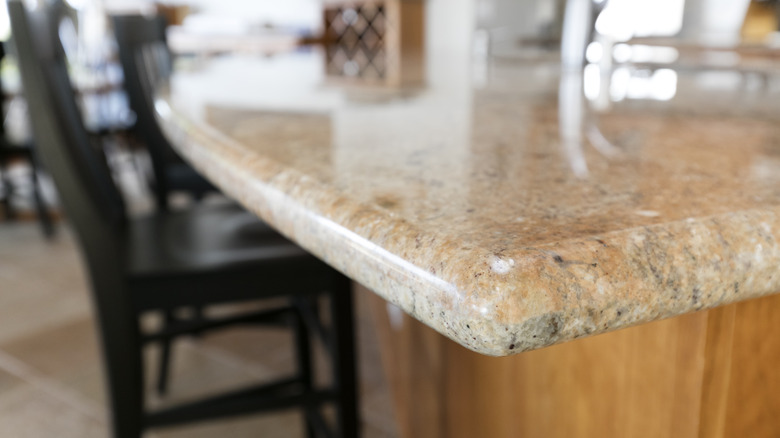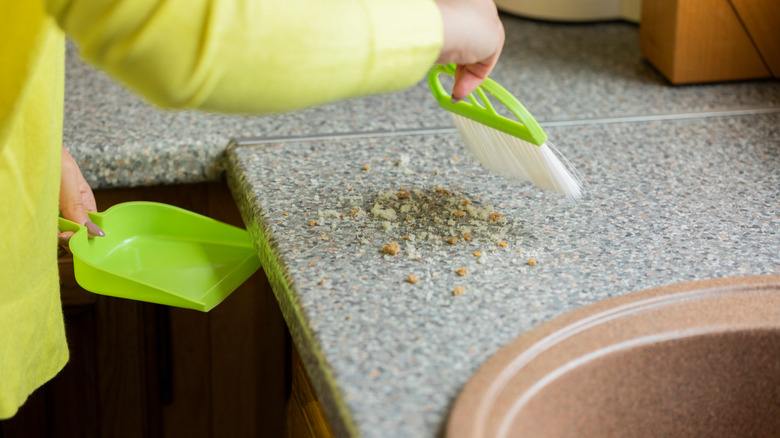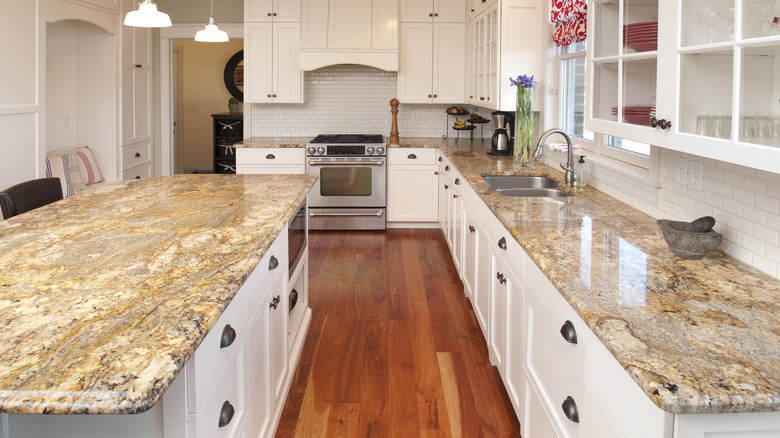The Drawbacks To Choosing Bullnose Edges For Your Countertops
Creating a kitchen comes with an onslaught of overwhelming decisions, such as choosing countertops for your home. In addition to selecting the material and color, you also have to narrow down the countertop edge style. When contemplating the design of the counters, you can pick between straight edge, quarter round, bullnose, and more. The edge style might seem like a minor detail that doesn't need much consideration, but each one comes with its own set of pros and cons. For example, if you're considering a bullnose edge, you'll be happy to know they are great for more traditional kitchens and offer a softer appearance due to their rounded shape. They're also a great pick if durability is your number one concern, since those rounded edges won't chip like a straight edge might. However, you should be aware of some of its more significant drawbacks.
For example, they might make cleaning a bit more cumbersome. It's harder to easily sweep crumbs off the side and into your hand due to its rounded edge. Its drawbacks don't just end with maintenance. It can also have some aesthetic downsides. Since it's linked with a more traditional look, it can end up looking dated if you're not careful. Here's a closer look at all the cons of bullnose edges.
Cleaning with a bullnose edge can be difficult
Bullnose edges add a soft touch to kitchen designs due to their curved edges, but those curves can make cleaning more annoying. Since they're rounded all the way to the bottom, wiping up crumbs becomes challenging. If you gather them in a pile and move them to the edge of the counter, pushing them with your hand or a cloth, the crumbs usually miss the target and spill over to the floor as they slide down its curved shape. Similarly, if you're cleaning up crumbs with a wet rag, the wet debris may cling to the underside of the edge as you try to push it into your hand or garbage.
The bullnose edge is also cumbersome with wet spills. If you knock over a glass of water or wine, the liquid will run over the edge and onto the floor thanks to the curve. This will create double the mess. In addition to that, the liquid can hug the curve, dripping down to the wooden or painted cabinet underneath. This can create streaks you need to clean, or it can cause permanent stains if you don't notice them for some time.
The style can be limiting due to its traditional look
Another drawback to bullnose countertop edges is that they're limited to traditional kitchen designs. The curved edges work best with natural stone like granite or marble, and look great when paired with raised panel or shaker-style cabinets. However, they tend to look out of place in modern kitchens with flat panel cabinets, since those are usually paired with straight-edge counters, their polar opposite. If you decide to create a minimalist, industrial, or more modern kitchen and choose bullnose edges, the end result can look outdated surrounded by so many contemporary finishes. It's likely to look like you haven't gotten around to swapping out your counters yet.
Another factor to keep in mind is that the bullnose edge might not work well with large format tiles, shiny panel doors, or other minimalist styles. This is because the bullnose is a decorative style, which can appear fussy in a minimalist kitchen. Additionally, it was a popular choice in the late '90s and early 2000s for builder grade homes, so it might appear overdone to some. The bullnose was often seen on polished granite countertops in busy, speckled colors such as pink, purple, or green, which some people associate with a dated style. This can make it difficult to incorporate bullnose edges into a new kitchen design.


